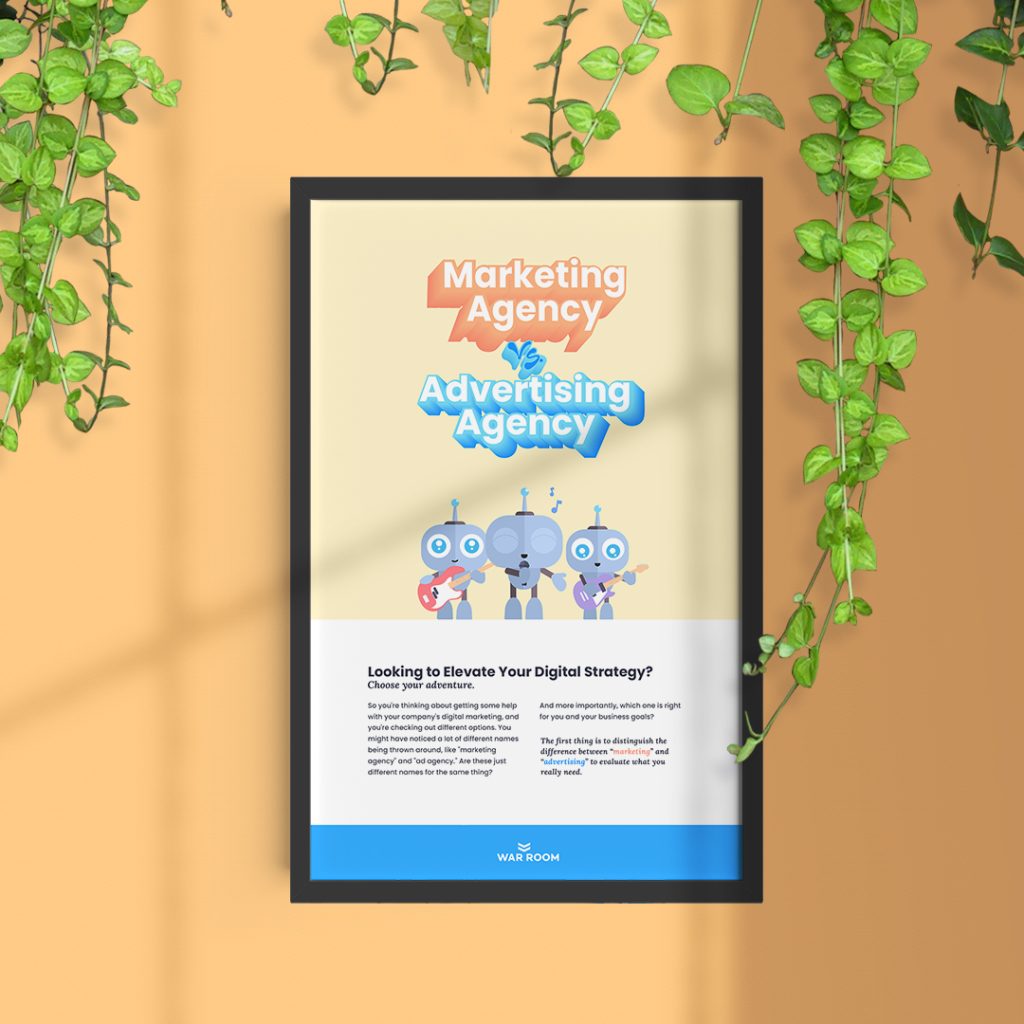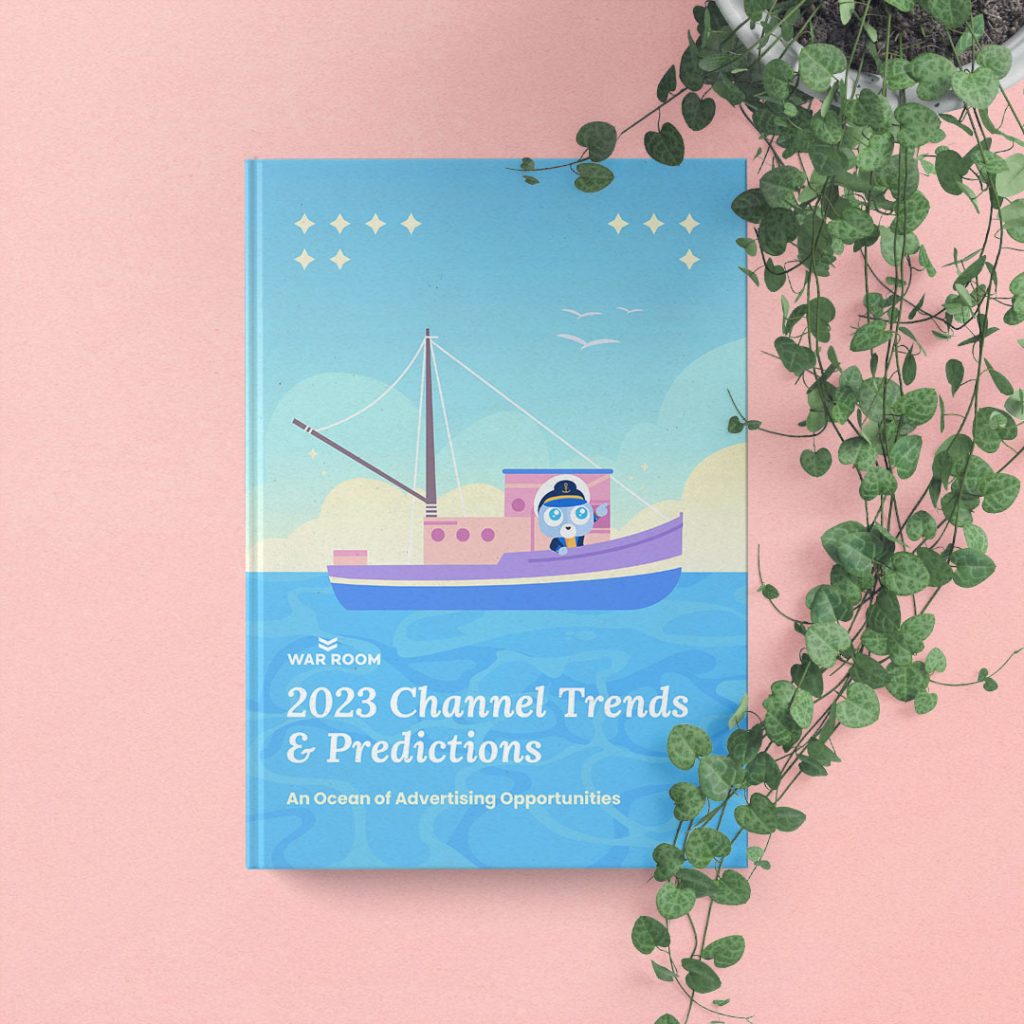Maximizing Call Center Performance with Digital Marketing

If you manage a Call Center, digital marketing could enhance its performance and elevate your business. Here are some tips, with a focus on social media.
Marketing Agency vs. Advertising Agency

Take center stage with your digital strategy. So, your business is growing, congratulations! Now, you’re looking to take it to the next level and need some help with your marketing strategy. Marketing VS Advertising…both have their benefits. But the question is which one is best suited to your goals and needs? Here’s our pet peeve: many people use the terms “marketing” and “advertising” interchangeably – but they’re not the same! Navigate the differences between the two types of agencies with ease and make an informed decision with the help of our resources! Each approach has its unique benefits and limitations, and your choice can impact your business’s success. Our infographic comprehensively compares the two types of agencies and what businesses and needs they can offer valuable support for. We cover everything you need to know to make an informed decision and choose the right agency for your business. Why You Need It Great For Both New & Established Brands Whether you’re a new business looking to establish your brand or an established brand seeking to revamp your marketing efforts, it will be helpful. Understand the benefits of each type of agency, get a fresh perspective and learn how to improve your digital efforts! Stop Wasting Your Marketing Budget Save money and avoid wasting resources on services that don’t benefit your business. Learn how to differentiate the two types of agencies easily and make confident choices that align with your goals and budget. Gain Core Digital Marketing Knowledge No matter where you are in your business journey, this resource and the blog version of it are informative tools that will become core digital marketing knowledge. Plus, they’re visually engaging and easy-to-read, which will set you on the right path. Get Ready to Rock your ROI Download Now
Best Ways To Use TikTok For Your eCommerce Business

Rev up your eCommerce game with TikTok! Learn how to make the most of this powerful social channel to grow your brand and business in this blog!
The Importance of Email Marketing in Your Digital Strategy

Email marketing is an essential tactic for every digital marketing strategy. We break down the main benefits in the this blog.
2023 Channel Trends & Predictions

Do you want to see real growth and results with your ad strategy? Sometimes you need to shake things up and inject new life into it. It’s easy to get comfortable with the same old tactics and strategies. If you want to bring your brand to the next level, you’ve got to step outside of your comfort zone. With new technologies and platforms emerging every day, it can be challenging to keep up and stay ahead of the curve. To remain competitive, it’s essential to stay up-to-date with the latest trends and understand where the digital landscape is heading. That’s why we’re excited to offer you our new eBook, where we identify channels and trends we predict will bring in better ROI for 2023. It’s packed with insights, stats, and tips that will help you optimize your digital strategy and achieve better results than ever before. Whether you’re a seasoned pro or just starting out, this is an invaluable resource that will help you stay ahead of the competition. So why wait? Download our eBook today and take your digital strategy to new heights! Why You Need It Discover Trends Across Plethora of Channels Aside from Search, Display, and Social, we cover other channels that are growing in popularity and underrated ones brands should consider. We guarantee you’ll learn something new. Predictions From Industry Insights & Stats Our predictions reference the latest statistics from marketing data reports. It will help you see the bigger picture that surrounds specific tactics we identify and recommend. Enhance Your Reading With Additional Blog Access We’ve also produced this eBook as a blog, with direct links to reference sources cited. Any way you want it, that’s the way you need it~ Chart your course towards higher ROI in 2023. Download Now
War Room is a Part of the Travel Local Collective!

We work with a team of dynamic experts to support and propel those in the travel & tourism industry!
Google Ad Changes You Should Know About

When it comes to digital advertising, we love what Google has to offer. Catch up with the major Google Ad changes now.
Great Examples of Super Bowl Ads

Super Bowl commercials are the peak of advertising when it comes to reach and budget. Get inspired with our curated faves!